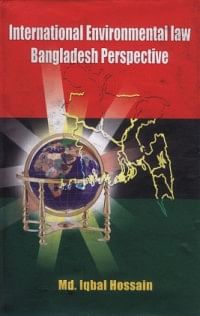Star law book review
International Environmental Law is a new phenomenon
 International Environmental
International Environmental
Law: Bangladesh Perspective
Author: Md. Iqbal Hossain
Pages 574
Published by Dhaka International University
Banani,Dhaka.
Zakir Shahin
International environmental law refers to the body of international law relevant to environmental issues. While the status of international environmental law as a discipline, in and of itself, is disputed by a few international scholars who believe that no autonomous "international law" exists apart from the general international law, it appears well established that environmental perspectives and concerns have stimulated and catalysed international legal development. The growth of international environmental law is premised on the globalisation of environmental problems and concerns, attributable to two crucially interrelated factors: ecological and economic interdependence.
Dhaka International University has published the book on International Environmental Law: Bangladesh Perspective, written by Md. Iqbal Hossain, Lecturer, Department of Law of the university.
International environmental law is a new phenomenon that can largely be traced from the 1970s. Over the last few decades perhaps no other area than the protection of the natural environment has significantly attracted the international community. Contemporary environmental problems such as ozone layer depletion, climate change and global warming, destruction of biodiversity, exhaustion of natural resources, population increases, deforestation and transboundary movements, sharing of common property regime have been of so pervasive nature that transcend national boundaries. Also it have been addressed during the last few decades in the national and international forum.
The United Nations Conference on the Human Environment held in Stockholm, Sweden in June 1972 represents the milestone that turned the environment into a major issue at the international level and enlarged the environmental issue for universal concern among nations. However later the United Nations Conference on Environment and Development (UNCED) that popularly known as the Earth Summit held in Rio de Janeiro in 1992 was also marked for introducing a new overreaching field of international law for sustainable development. Consequently, these measures have gradually crystalised into an evolving body of environmental law. The book however reflects international environmental law a new and emerging branch of public international law and also addresses those principles and rules of international law, which are essentially relative to the protection of environment and nature as a whole.
Like all other nation Bangladesh, as part of her environmental obligations has adopted a number of environmental instruments for the protection and conservation of environment. Although the subject is largely considered to be of recent origin, it bears a long history that someone might suggest. The book seeks to present a clear and easily accessible account of the sources of international environmental law for lawyers, researchers, students and whoever find interest on the subject. In such efforts, the book attempts to identify and assess those rules of international law, which impose limits on the rights of the states and other members of the international community to carry out environmental damaging activities.
The book is divided into three parts. Part-I entitled "The International Law Environmental Law in General", intends to identify the environment and the international community. Issues, meaning and nature (Chapter-1), origin and development of international environmental law (Chapter-2), sources of international environmental law (Chapter-3), and international environmental law: Implementation, enforcement and settlement of disputes (Chapter-5).
Part-II entitled "General Principles Establishing Environmental Standards and Environmental Sectoral Regulations" discusses the general principles of environmental law (Chapter-5), atmosphere (Chapter-6), conservation of biological diversity (Chapter-7), tarns boundary movement of hazardous wastes (Chapter-8), and environmental measures and international trade (Chapter-9).
Part-III entitled "Environmental Laws: Bangladesh Perspective"- identifies the major environmental instruments in Bangladesh (Chapter-10).
The book mainly focuses on the application of international environmental law regime in the regional and global level. In the explanation of contemporary environmental issues the book tries to apply the ways and ideas from the viewpoint of developing countries interest. Particular attention is given on the applications of major environmental instruments in up to date forms in Bangladesh perspective through a sweeping touch of her environmental background and movements. In this context the book tries to list out the environmental ICTPs to which Bangladesh is a party.
The innovative aspect of the book is that it tries to explore the legal developments and other progress that have been made in the last decade. And in the in the preparation of the book effort has been made to update the treaty regime and other emerging global environmental issues.
'Hopefully the book will benefit students, researchers, teachers and law practitioners and also the book will support those who are keen to move for the cause of nature and environment.
The author is a Masters from Wageningen University, The Netherlands and at present working for Farmers' Voice.